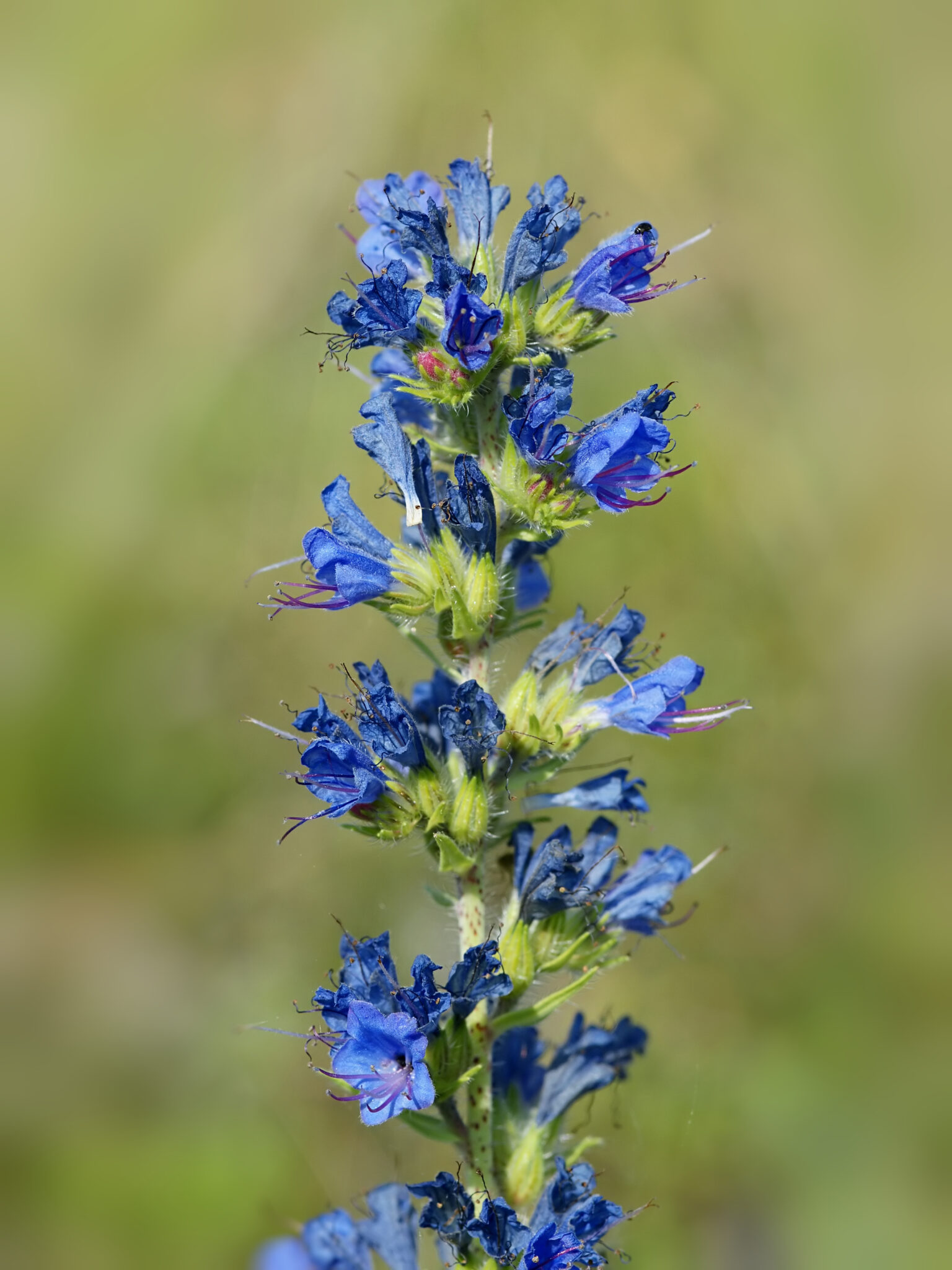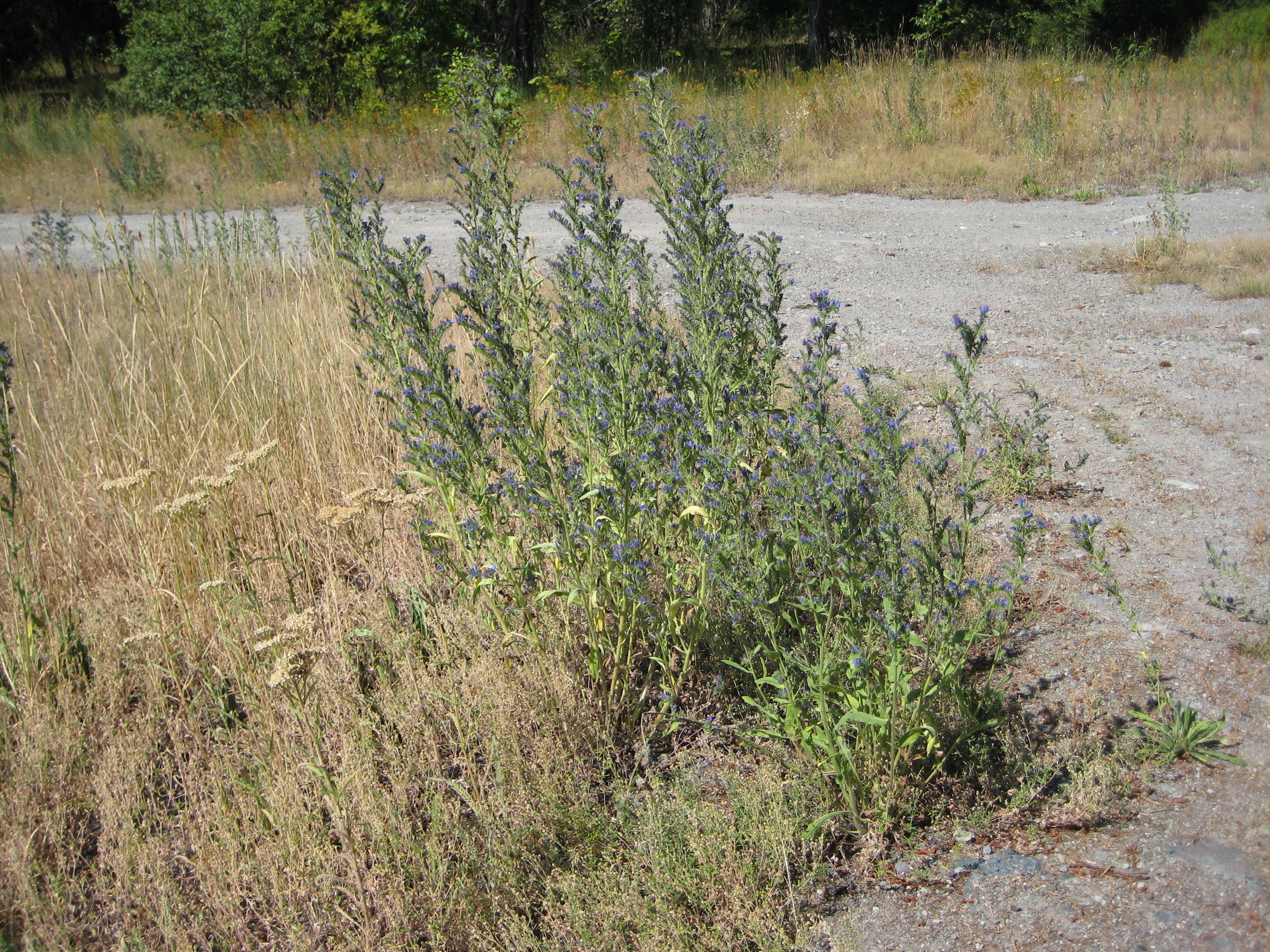My stem is hairy, and my leaves are too,
I stand out since my flowers are blue!
I grow in shallow soils, rocky and dry places,
I’m a noxious weed that’s highly invasive!

This week’s invasive species is Blueweed. This plant will quickly overtake fields, replacing the grasses and other native plants that livestock and wildlife feed on. Blueweed contains a compound that makes it toxic to animals – luckily, they don’t usually eat it unless they have to, since Blueweed is also unpalatable to animals. Blueweed can also be a host for plant pathogens, carrying diseases to our native ecosystems.

Blueweed is native to Europe and was likely brought to North America as a garden ornamental in the early 20th century. It prefers dry, well-drained soils and does not tolerate shade. Blueweed is commonly found along roadsides, in drainage ditches, along fencelines, in pastures and rangelands, and other disturbed areas.
Blueweed is a biennial plant. It develops a rosette of leaves covered in bristly hairs near the ground in its first year; flowering stems form the following year. The stems, also covered in bristly hairs, grow 30 – 80cm tall and bear bright blue flowers on the upper sides of smaller, arching stalks. Before blooming, the buds are reddish-purple. Each flower is 5-lobed and slightly funnel-shaped.
Blueweed is sometimes referred to as Viper’s Bugloss. This is due to the shape of its seeds, which resemble a viper’s head. These seeds have a rough exterior and cling to fur, feathers, clothing, and hair, which allows Blueweed to spread quickly. Each plant produces approximately 2800 seeds, and they remain viable in the soil for 5 – 10 years.
Blueweed contains pyrrolizidine alkaloids, which some plants produce as a defence against herbivores. Wildlife and livestock will typically avoid eating them as they don’t taste very good. Still, following drought or the formation of Blueweed monocultures, they may be left with no other option than to eat Blueweed. Consumption of large amounts of pyrrolizidine alkaloids can cause serious illness or death.
Blueweed is commonly confused with the invasive Common Bugloss and the native Arctic Lupine. Common Bugloss is in the same plant family as Blueweed, so it’s no surprise they look similar to one another. Blueweed flowers are blue and showier, while the flowers of Common Bugloss are a darker purple and are simpler. Arctic Lupine is a similar size and has flowers the same colour as Blueweed, but the flower and leaf shapes are entirely different. Arctic Lupine has palm-shaped leaves and pea-like flowers.
Per SSISC’s Invasive Plants Priority List, Blueweed is listed as a species to contain in Squamish and Pemberton, and to eradicate in Whistler. We rely heavily on reports from the public to understand the current distribution of plants in the Sea to Sky and prevent their spread. With that in mind, we invite you to keep your eyes peeled for Blueweed and report any sightings.

I Spy in the Sea to Sky Contest
Guess the invasive species in our I Spy in the Sea to Sky weekly social media post, June through August, to enter the giveaway. At the end of each month, one lucky commenter will win a Native Wildflower seed mix packet!
Contest Rules:
- Comment your guess (common/species name) on either Facebook or Instagram post to enter
- One entry per person per post
- Anyone can play, but only residents of the Sea to Sky region are eligible to win
- Content entries will close at 11:59 PM PST on July 31st
- Winners will be announced in the first week of the following month on the SSISC Instagram story and contacted via their platform of entry



Add Comment